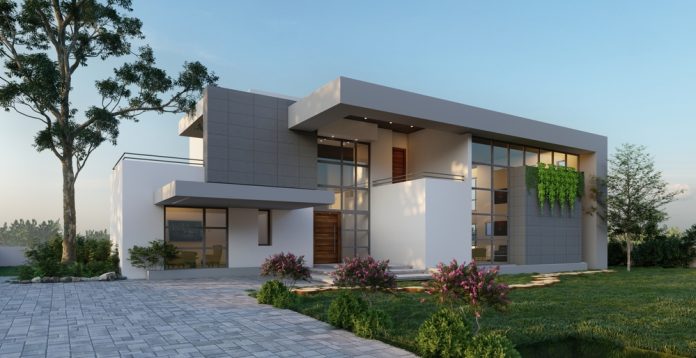Buying your first home is one of the most exciting milestones in life. The idea of having your own space, no longer throwing money away on rent, and finally being able to paint the walls whatever color you want (hello, neon green accent wall!) is enough to make anyone giddy. But here’s the thing: excitement can sometimes cloud your judgment. And when it comes to making one of the biggest financial decisions of your life, you don’t want to let emotions steer the ship.
Not every home is a great investment. Some properties may look like a dream on the surface but come with hidden issues that could turn your homeownership journey into a nightmare. To help you avoid buyer’s remorse, let’s dive into the types of homes that should come with giant red flags—and why you should think twice before signing on the dotted line.
1. Properties in Less-Than-Desirable Locations
You’ve probably heard the age-old real estate mantra: location, location, location. And while it might sound like a broken record, it’s repeated for a reason. The location of your home can make or break your living experience—and your investment.
The Noise Factor
Homes near freeways, train tracks, or airports often come with a lower price tag, which can be tempting for first-time buyers. But before you get too excited about the deal, consider the noise pollution. Imagine trying to enjoy a quiet evening on your patio while planes roar overhead or trains rattle by at all hours. Not exactly the serene oasis you were envisioning, right?
And it’s not just about the noise. Living near high-traffic areas can also mean dealing with poor air quality. Freeways, for example, are notorious for emitting pollutants that can seep into your home. If you or your family members have respiratory issues, this could be a serious concern.
Resale Value Woes
Here’s another thing to keep in mind: if the location is less than ideal for you, it’s likely to be a turnoff for future buyers too. That means when it’s time to sell, you might struggle to find a buyer willing to pay top dollar for your home. So, while the lower price might seem like a steal now, it could end up costing you in the long run.
Flood Zones and High-Crime Areas
Location issues go beyond noise and air quality. Homes in flood zones or high-crime areas can also be problematic. Flood zones, for example, may require expensive flood insurance, and the risk of water damage is always looming. Similarly, high-crime areas can affect your quality of life and make it harder to sell the property later. Always check local crime statistics and flood maps before making an offer. 
Proximity to Amenities
Another aspect of location to consider is proximity to amenities like schools, grocery stores, and healthcare facilities. A home that’s far from these essentials might save you money upfront but cost you in time and convenience later. Think about your daily routine and how the location will impact it.
2. Properties That Have Been Flipped
Ah, the allure of a flipped home. Fresh paint, shiny new fixtures, and that new house smell—what’s not to love? Well, as it turns out, quite a bit. While some flipped homes are done with care and precision, others are more like a cheap facelift that hides deeper issues.
The Danger of Cutting Corners
Flipping houses is a business, and like any business, the goal is to maximize profits. Unfortunately, this sometimes means cutting corners. A flipper might use inexpensive materials or rush through renovations to get the property back on the market as quickly as possible. Sure, the home might look great, but what’s lurking beneath the surface?
For example, that beautiful new flooring might be covering up water damage, or those freshly painted walls could be hiding mold or foundation cracks. And if the flipper skipped necessary permits or inspections, you could be on the hook for legal issues down the line.
How to Spot a Bad Flip
Not all flips are created equal. Here are some signs that a flipped home might be more trouble than it’s worth:
- Too-good-to-be-true pricing: If the price seems unusually low for a recently renovated home, it could be a red flag.
- Sloppy workmanship: Look for uneven tile work, poorly painted walls, or doors that don’t close properly.
- Lack of permits: Always ask for documentation to ensure all renovations were done legally and up to code.
How to Protect Yourself
If you’re considering a flipped home, don’t skip the inspection. Hire a professional to thoroughly assess the property, paying special attention to the quality of the renovations and any potential hidden issues. Ask for documentation on permits and work done, and if something feels off, trust your gut. It’s better to walk away than to end up with a money pit.
3. Properties with Structural Damage
Structural damage is the real estate equivalent of a ticking time bomb. It might not be immediately obvious, but once it’s discovered, it can be a costly—and sometimes dangerous—problem to fix.
Foundation Issues
One of the most common (and expensive) types of structural damage is foundation problems. Cracks in the walls, sloping floors, and doors that don’t close properly are all red flags. While minor cracks might not be a big deal, major shifts in the foundation can threaten the integrity of the entire house.
Repairing a foundation can cost tens of thousands of dollars, and the longer you wait, the worse—and more expensive—the problem becomes. If you’re considering a home with foundation issues, get a professional assessment to determine whether the repairs are worth it.
Roof Damage
The roof is another critical component of a home’s structure. If it’s old or damaged, you could be looking at costly repairs or even a full replacement. Signs of roof damage include missing shingles, water stains on the ceiling, or sagging areas. A professional inspection can help you assess the condition of the roof and estimate repair costs. 
Termite Damage
Termites might be small, but they can cause big problems. These pests can chew through wood, causing significant damage to a home’s structure. Look for signs of termites, such as hollow-sounding wood, mud tubes on exterior walls, or small piles of sawdust. If you suspect termite damage, get a pest inspection before moving forward.
4. Properties in Need of Expensive Repairs
Some homes are priced low because they need a lot of work. And if you’re a DIY enthusiast, you might be tempted to take on the challenge. But before you roll up your sleeves, consider the true cost of those repairs.
Outdated Wiring and Plumbing
Old wiring and plumbing systems can be a nightmare to deal with. Outdated electrical systems might not be able to handle modern appliances, increasing the risk of fire hazards. Similarly, aging plumbing can lead to leaks, water damage, and even health risks if the pipes are made of lead or insulated with asbestos.
Replacing these systems isn’t a weekend DIY project—it requires licensed professionals, and the costs can add up quickly. When you factor in the expense of these repairs, the home might not be the bargain you thought it was.
HVAC Systems
Heating, ventilation, and air conditioning (HVAC) systems are another potential money pit. If the home’s HVAC system is old or inefficient, you could be facing expensive repairs or replacements. Ask about the age of the system and have it inspected to ensure it’s in good working order.
5. Financial Red Flags
When buying a home, it’s not just the physical condition of the property that matters—it’s also the financial health of the transaction. Here are some financial red flags to watch out for:
Homes with Liens or Unpaid Taxes
If the property has liens or unpaid taxes, you could be on the hook for those debts after the purchase. Always do a title search to ensure the property is free and clear of any financial encumbrances.
HOA Disputes
If the home is part of a homeowners association (HOA), ask about any ongoing disputes or special assessments. These could lead to unexpected costs or headaches down the line.
6. Emotional Red Flags
Sometimes, the biggest red flags aren’t about the property itself—they’re about how you feel about it. Here’s how to avoid falling in love with a home that’s wrong for you:
The “Perfect” Home
If a home seems too good to be true, it probably is. Don’t let your emotions override your better judgment. Take a step back and evaluate the property objectively.
Pressure to Buy
If you feel pressured to make an offer, that’s a red flag. Buying a home is a big decision, and you should never feel rushed. Take your time and make sure you’re comfortable with your choice.
7. Tips for First-Time Buyers
Finally, here are some additional tips to help you navigate the home-buying process:
Work with a Trusted Real Estate Agent
A good agent can help you avoid red flags and find a home that meets your needs and budget.
Get Pre-Approved for a Mortgage
Knowing how much you can afford will help you narrow down your options and avoid falling in love with a home that’s out of your price range.
Don’t Skip the Inspection
A professional inspection is one of the best ways to uncover hidden issues and avoid costly surprises.
Final Thoughts…
Buying your first home is a huge step, and it’s natural to feel a mix of excitement and nervousness. But by being aware of these red flags and taking the time to do your research, you can make a smart, informed decision that sets you up for long-term success.
Remember, the goal isn’t just to buy a house—it’s to find a home that brings you joy, comfort, and financial stability. So, take your time, ask questions, and don’t be afraid to walk away if something doesn’t feel right. After all, your dream home is out there, and it’s worth waiting for. Happy house hunting!


